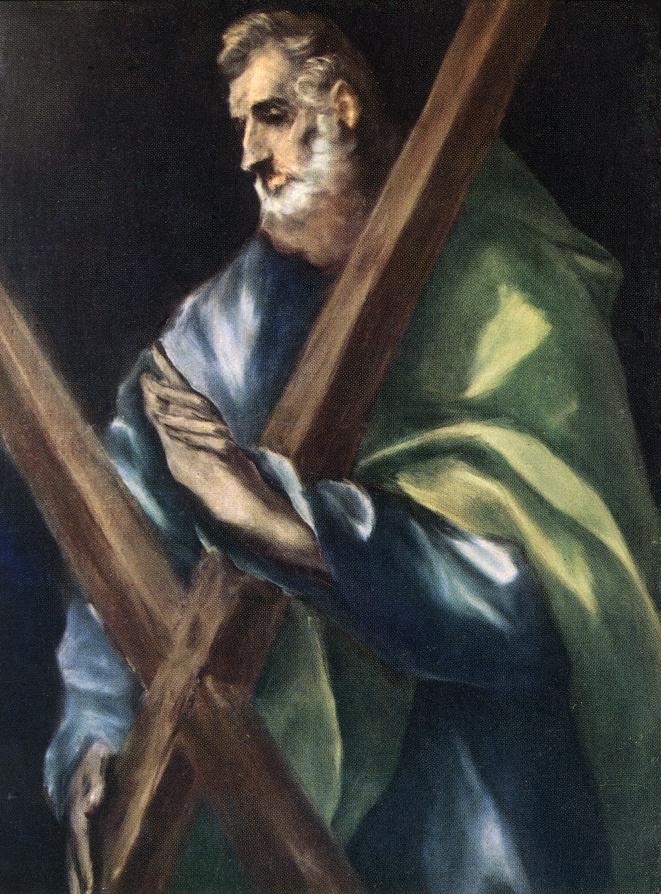Thanksgiving gatherings have begun to fade into memory. And whatever your strategy for avoiding (or indulging in) the retail phenomenon called “Black Friday,” this odd period is over too, or at least I hope it is over. Around here, Black Friday has been like the bad dream that won’t go away, with hyperbolic advertising flying around since well before Thanksgiving.
Now, of course, the stores are in full-blown commercial Christmas ecstasy. Yet, we are still actually in a different season: the very end of the longest, and last, liturgical period of the year known as Ordinary Time. It began May 21, the Monday after Pentecost, and will conclude December 1, the last Saturday before Advent.
When Advent dawns (December 2 this year), a new liturgical year dawns as well for Western Christians. So, you might say we are waiting for both an end and a beginning. Or, if you will, we are waiting to begin a season of waiting.
Advent is indeed a period of waiting, expectation, and anticipation before the Nativity of Christ. Depending on the family traditions in your household, the weeks of Advent may be either a festive ramp-up to Christmas or a subdued period of preparation, prayer, and fasting. Or perhaps something in between. No matter how you proceed through Advent, the season culminates in the tender services of Christmas Eve.

For Western Christians, this year’s season of Advent is quite short: 23 days. Eastern Christians (Orthodox) and Eastern Catholic Christians celebrate a much longer Advent season that begins on November 14 (St. Martin’s Day) and goes by the name of “Nativity Fast.” But for us, in the West, Advent begins four Sundays before Christmas Day. Or, to look at it more liturgically, Advent begins on the Sunday closest to the Feast of St. Andrew (Nov. 30) and continues until Christmas Eve.
However you view or celebrate it, Advent will fly by this year. And guess what? The retail world has discovered Advent! Or, at least, the Advent Calendar, albeit in forms that generally horrify me.
Why am I surprised, though? What does commercialization not try to ruin? Why not have a Frozen Advent Calendar so that we can funnel even more money into Disney? Or, why not unleash a tumble of Advent calendars extolling consumer goods as varied as Victoria Secret’s underwear, Legos’ Star Wars toys, and Aldi’s Wine Samples? ‘Tis the Season, after all.
Okay, I’ve gotten that out of my system now.
But, seriously, the one thing these calendars have in common is a common error, namely dating the beginning of Advent fixedly as December 1. And, of course, these calendars prey on a sad desire for many to make Christmas more exciting or meaningful by ramping up consumption.
Lighten up Carol, you say? Ok, I will lighten up a bit. But let’s agree that there’s a big leap between unveiling a new fishing fly each day (yes, such an Advent calendar exists) and taking on the Advent as a season of devotion.
Still, due to these strange manifestations, the term “Advent” at least has moved back into the popular consciousness, right? So perhaps good will come of it.
Now, as to our Advent calendar here at Professor Carol, we will again be sending it out, beginning on Sunday, December 2. That very day I will be landing in Munich and boarding a river ship to conduct my last Smithsonian Journey’s trip of the season—a voyage through Christmas markets on the Rhine River.
Of course, it’s going to be lovely. But I’d rather be home on December 2 with my family, gazing at our brass Advent wreath intertwined with fresh greenery, and lighting that first candle. I know that many of you will be doing exactly that and I will be thinking of you.
Our Advent calendar, as always, will focus on traditions, music and the arts, and history. We’ll be featuring quite a few of our “classic” entries and presenting new ones as well. And I’ll reflect on some on my upcoming travels.
Indeed, quite special “Advent” things will happen on the ship between now and my return on December 12. Of course, we will be touring many German Christmas Markets, including those in Nuremberg and Cologne. We’ll hear local choirs and bands perform, sample all kinds of seasonal treats, including my favorite: smoked butterfish (I bet you thought I was going to say something like Lebkuchen, a German holiday staple).
But we are likely to see some special German Advent traditions enacted as well. I’ll be anticipating especially the evening of December 5, the night before St. Nicholas’ Feast on Dec. 6. The last time I did this tour two years ago, we watched in awe from the ship as local citizens from the small town where we were docked plunged themselves into the cold (believe me, cold) Rhine, some admittedly in wet suits, but some not. They bore torches and escorted an illuminated raft on which sat a figure of “St. Nicholas.” Songs were sung by the onlookers, who cheered the swimmers on during a 20-minute water-procession past the shore. Surely all kinds of hot beverages and congratulations awaited the brave participants once they dried themselves off and moved to warmer quarters.
That very night, we were encouraged by our ship director to put our shoes out in the hallway if we wanted a special treat from St. Nicholas. A good half of my fellow travelers didn’t believe her, and they were pretty disappointed when the rest of us showed off our treats at breakfast the next morning.
Simple traditions like these bring great delight. Learning about how others commemorate the events of a religious season brings equal delight. And discovering the meanings behind the symbols of the season, as well as the artistic treasure that have defined Advent and Christmas, also brings joy. We hope our calendar will indeed be a blessing for you and your family this year.



